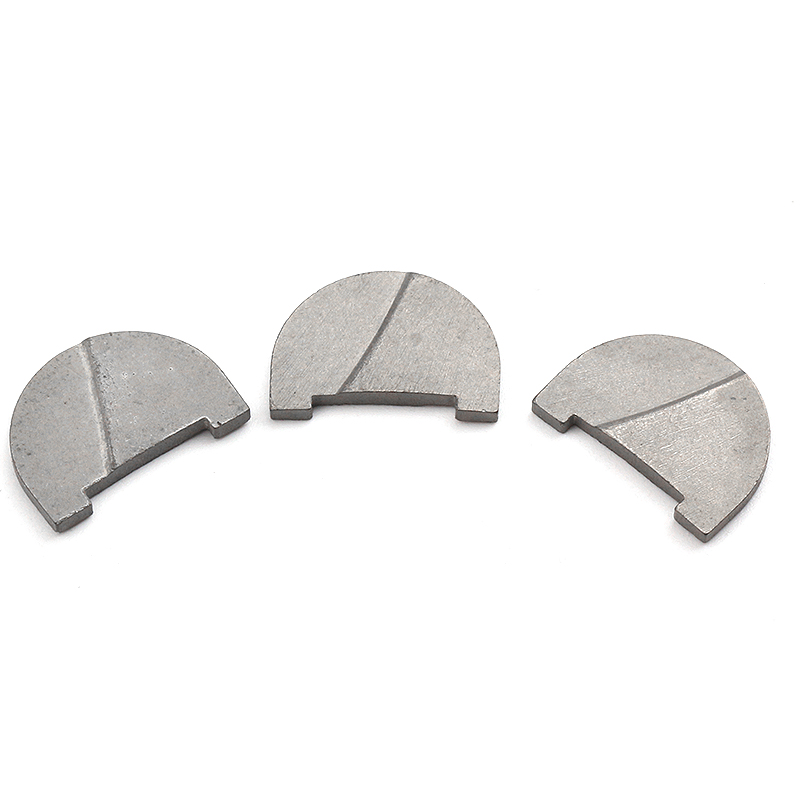2025-08-22
In the fast-paced rhythm of machining shops, where time and precision intersect, Carbide Non-Slip Pins and Indexable Inserts emerge as a dynamic pair. Together, they solve a critical challenge: enabling quick, secure tool changes without sacrificing the stability needed for accurate work. This balance—between easy replacement and unwavering hold—makes them indispensable in environments where every minute of downtime counts.

How Carbide Non-Slip Pins Enable Quick, Secure Swaps
Carbide Non-Slip Pins are engineered to strike a deliberate balance: they hold Indexable Inserts firmly during operation but release easily when a changeover is needed. This duality starts with their material and surface design. Made from tungsten carbide, these pins are hard enough to resist deformation under the forces of machining, yet their textured surfaces—knurled, grooved, or micro-etched—create controlled friction.
This friction is key. During use, the texture grips the insert’s holder, preventing slippage even as vibrations ripple through the tool. But when it’s time to swap out a dull insert, moderate pressure overcomes that friction, allowing the pin to be removed without damaging the holder or the pin itself. This contrasts with rigid fasteners that can seize over time, requiring excessive force or specialized tools to dislodge.
Size consistency amplifies this efficiency. Pins are manufactured to tight tolerances, matching the standardized holes in Indexable Inserts and holders. A 5mm pin fits a 5mm hole precisely—no wiggling during installation, no struggle to align components. This uniformity means machinists can swap inserts in seconds, not minutes, reducing the lag between finishing one job and starting the next.
The Versatility of Indexable Inserts: Adapting to Diverse Tasks
Indexable Inserts are designed to be chameleons of the machining world, adapting to different materials, cuts, and finishes—all while working seamlessly with Carbide Non-Slip Pins. Their versatility stems from two key traits: standardized sizing and varied geometries.
Standardization ensures that an insert from one batch fits into the same holder, secured by the same Carbide Non-Slip Pin. This means a shop handling both aluminum and stainless steel can use the same holder, swapping in a sharpened insert for aluminum and a coated insert for stainless steel. No need to retool the entire setup—just swap the insert, reinsert the pin, and resume work.
Geometric variety expands this adaptability. Inserts come in shapes like squares, triangles, and rounds, each optimized for specific tasks: square inserts for straight turning, triangular inserts for angled cuts, round inserts for contouring. Their cutting edges vary too—some are sharp for fine finishing, others are reinforced for heavy roughing.
Design Synergies That Simplify Changeovers
The ease of swapping Indexable Inserts owes much to the deliberate design synergy between the inserts and Carbide Non-Slip Pins. Manufacturers align three key features to streamline changeovers:
Insert holes are countersunk or chamfered at the edges. This allows the pin’s head to sit flush or slightly below the insert’s surface, avoiding interference with the workpiece. It also guides the pin during installation, so machinists don’t waste time aligning it perfectly—just drop it in, and the chamfer steers it into place.
Second, pin lengths are calibrated to the insert’s thickness. A thin insert uses a shorter pin, while a thicker insert uses a longer one. This ensures the pin fully engages the holder without protruding, keeping the insert flat against the holder’s surface—critical for maintaining cutting accuracy.
Third, both components use materials with compatible wear rates. Tungsten carbide pins and carbide inserts resist abrasion similarly, so repeated insert changes don’t wear down the pin’s texture or the insert’s hole. This longevity means the pairing remains efficient for thousands of changeovers, consistent in both security and ease of use.
ime and Cost Savings in Daily Operations
In practical terms, this partnership translates to tangible benefits for shops of all sizes. A small job shop, for example, might switch between machining brass fittings and steel brackets multiple times a day. With Indexable Inserts secured by Carbide Non-Slip Pins, each changeover takes less than a minute—no need to recalibrate the tool holder, no risk of misalignment. Over a week, this adds up to hours of recovered productivity.
For high-volume production facilities, the savings are even starker. A line producing automotive gears might change inserts every 500 parts. Quick swaps mean the machine runs more, idle less—boosting output without adding shifts. Additionally, the controlled friction of the pins reduces wear on both inserts and holders, extending their lifespans and lowering replacement costs.
Even for novice machinists, the simplicity of the system reduces errors. There’s no guesswork in installing the pin or aligning the insert—standardized sizes and guided design make it intuitive.
In every scenario, Carbide Non-Slip Pins and Indexable Inserts redefine what “effortless” means in machining. They turn tool changeovers from a chore into a routine step, keeping operations flowing as smoothly as the cuts they produce.